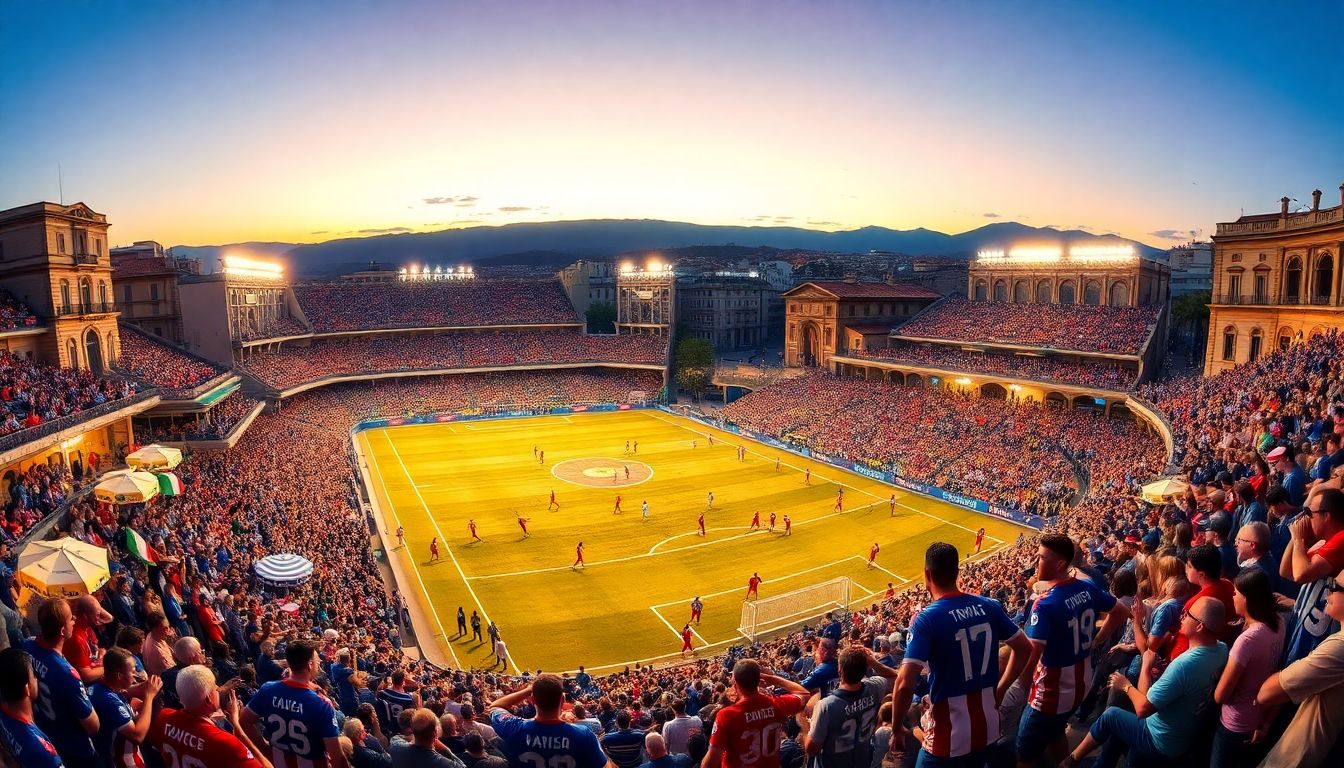
Introduction
Serie A once ruled European football, with legendary players and unforgettable matches. But in recent years, the league has faced big hurdles. From dropping TV ratings to financial crises, things looked grim. Yet, Italy’s top league showed it could bounce back. Resilience and smart moves became the secret to its survival. This article explores how Serie A faced its toughest challenges and came out stronger than before.
The Historical Context of Serie A’s Challenges
Decline in Global Popularity and Viewership
During the 2000s, Serie A started losing fans worldwide. The Premier League and La Liga grew in popularity thanks to faster play and star power. Many fans turned to these leagues instead of Italy’s. As a result, TV ratings fell, cutting into revenue and reducing the league’s global impact. It was clear that Serie A needed to reinvent itself to win back attention.
Financial Struggles and Club Debt
Many Italian clubs went through money problems. Juventus, AC Milan, and others faced staggering debts. To stay afloat, clubs had to sell players or cut back on spending. This hurt the level of competition and made it harder to attract top talent. Clubs struggled with high wages and limited budgets, which threatened the league’s overall strength.
Competition and Changing Football Dynamics
Other European leagues began to dominate. Big transfers shifted away from Italy, and investment slowed. The changing game meant Serie A had to find new ways to attract players and fans. Instead of relying only on history, it had to adapt to new realities and stay relevant.
Strategic Reforms and Structural Improvements
League Restructuring and Governance Changes
The league made some smart structural changes. New formats, like a playoff system, were introduced to boost excitement. Better governance aimed to strengthen club management and improve transparency. These moves helped create a more competitive environment and encouraged fans to stay interested.
Financial Fair Play and Sustainability Initiatives
UEFA’s Financial Fair Play rules pushed clubs to be smarter with money. Italian teams adopted new financial strategies to stay within limits. Clubs prioritized long-term stability over quick wins. This shift helped reduce debt and secured a healthier financial future for Serie A.
Investing in Youth and Infrastructure
Italy also focused on developing young talent at home. Youth academies grew stronger, giving players a chance to shine. Big investments were made to upgrade stadiums and training centers. These efforts made the league more attractive both for players and fans.
Embracing Innovation and Digital Transformation
Digital Marketing and Global Fan Outreach
Serie A embraced social media and online platforms to connect with fans worldwide. By sharing behind-the-scenes content, videos, and live streams, clubs built stronger relationships. This digital push increased international followers and expanded the league’s reach.
Data Analytics and Performance Enhancement
Clubs adopted data tools to improve player performance. Teams analyze stats to develop better tactics. This approach has led to smarter gameplay on the pitch and more competitive matches. In turn, fans enjoy more exciting, unpredictable games.
Technology Adoption (VAR, Wi-Fi, AR)
Match officials now use Video Assistant Referee (VAR) technology to reduce errors. Stadiums upgraded with Wi-Fi and augmented reality gave fans a modern experience. These tech upgrades not only improved officiating but also made attending games more fun and engaging.
International Success and Talent Development
Export of Italian Talent to Global Leagues
Many Italian players moved abroad and succeeded. Clubs became known for producing talented young stars who shined on the biggest stages. This helped rebuild Italy’s reputation as a country that nurtures top footballers.
Winning European Competitions
Post-challenges, Serie A teams started winning European titles again. Clubs like Juventus lifted the Champions League trophy in 2017. Such victories boosted pride and showed that Italy’s league still had world-class quality.
Collaborations and Partnerships
Global alliances with clubs and brands helped Italian teams improve. Partnerships brought new ideas, funding, and talent. These collaborations widened the league’s exposure and opened new opportunities for growth.
Community Engagement and Cultural Revitalization
Reconnecting with Local Fan Bases
Clubs launched programs to invite local communities back to stadiums. Special events and fan appreciation days breathed new life into Italian football culture. Bringing fans closer built stronger club identities.
Promoting Italian Football Culture
Reviving historic rivalries made matches more exciting. Celebrating Italy’s rich football history kept traditions alive. This cultural pride attracted old and new fans alike.
Social Responsibility and Grassroots Programs
Youth programs and community projects gained importance. Investing in young players and local neighborhoods created a sustainable future. Italian football’s roots grew stronger from these grassroots efforts.
Key Takeaways and Future Outlook
Serie A’s comeback story is rooted in adaptation and smart planning. It learned from past mistakes, embraced new tech, and focused on developing talent. Other leagues can learn from Italy’s experience how to stay relevant amid tough times. Looking ahead, Italy’s league is poised to welcome new stars, harness technology, and grow globally. The beauty of Serie A’s story? It proves that even in hard times, resilience and evolution lead to greatness.
Conclusion
Serie A survived its darkest days by applying strategic reforms, embracing innovation, and reconnecting with its roots. Today, it stands stronger, smarter, and more globally competitive. This journey shows that no challenge is too big when dedication meets adaptability. Italian football’s legacy isn’t just about history; it’s about a new chapter full of promise, energy, and passion. Expect to see Serie A grow more vibrant, both on and off the pitch, for years to come.
